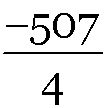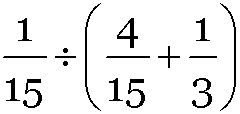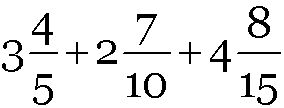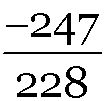Numbers Worksheet-13
 then the other number is
then the other number is(a)  (b)
(b)  (c)
(c)  (d)
(d) 
 so as to get
so as to get 
(a)  (b)
(b)  (c)
(c)  (d)
(d) 
(i) Difference of two rational numbers is a rational number
(ii) Subtraction is commutative on rational numbers
(iii) Addition is not commutative on rational numbers.
(a) (ii) and (iii) (b) (i) only
(c) (i) and (iii) (d) All of these
(a) The reciprocals 1 and –1 are themselves.
(b) Zero has no reciprocal
(c) The product of two rational numbers is a rational number
(d) All of these

(a) Associative property (b) Commutative property
(c) Distributive property (d) None of these
(a) 0 (b) 1 (c) –1 (d) None
 . If one of the numbers is
. If one of the numbers is  , then the other number is
, then the other number is
(a)  (b)
(b)  (c)
(c)  (d)
(d) 
 be multiplied to obtain 26?
be multiplied to obtain 26?(a)  (b)
(b)  (c)
(c)  (d) None
(d) None
 meters?
meters?(a) 8 (b) 10 (c) 6 (d) 12
B: Division by Zero is not defined, then which of the following statement is correct?
(a) A is True and R is the correct explanation of A
(b) A is False and R is the correct explanation of A
(c) A is True and R is False
(d) None of these
 is equivalent to
is equivalent to(a)  (b) 9 (c)
(b) 9 (c)  (d) 5
(d) 5
 is
is(a) 68/15 (b) 331/30 (c) 27/10 (d) 325/30
q: irrational numbers can not be written as fraction.
(a) Both p and q are true (b) p is true and q is false
(c) p is false and q is true (d) Both p and q are false
(a) 6.4 (b) 0.64 (c) 0.064 (d) 0.0064
 is
is(a)  (b)
(b)  (c)
(c)  (d) None of these
(d) None of these
 expressed as a fraction is
expressed as a fraction is(a)  (b)
(b)  (c)
(c)  (d)
(d) 
 is
is(a)  (b)
(b)  (c)
(c)  (d)
(d) 
q: every rational number is a fraction.
(a) Both p and q are true (b) p is true and q is false
(c) p is false and q is true (d) Both p and q are false

(a)  (b)
(b)  (c)
(c)  (d)
(d) 
(1) x < y, (2) x = y, (3) x > y
(a) Only 1 and 2 are correct (b) Only 2 and 3 are correct
(c) Only 2 is correct (d) All 1, 2, and 3 are correct
Answer Key:
(1)-(a); (2)-(b); (3)-(a); (4)-(d); (5)-(c); (6)-(b); (7)-(d); (8)-(b); (9)-(a); (10)-(b); (11)-(a); (12)-(b); (13)-(c); (14)-(d); (15)-(c); (16)-(c); (17)-(a); (18)-(d); (19)-(b); (20)-(d)